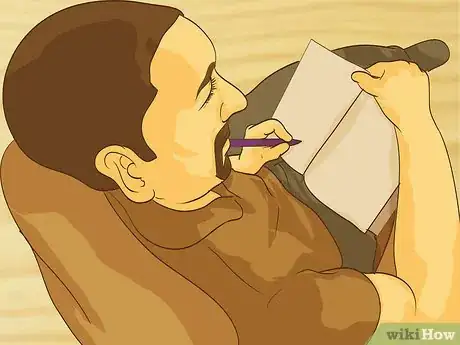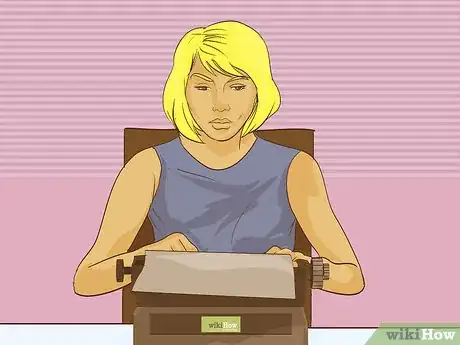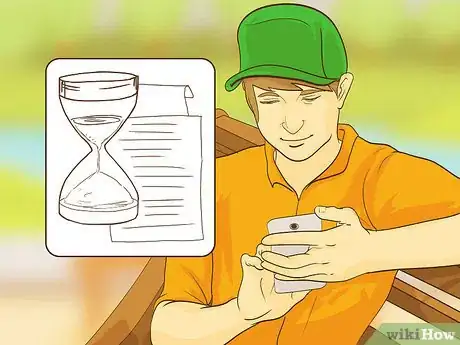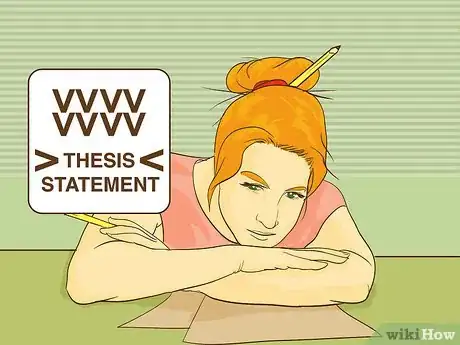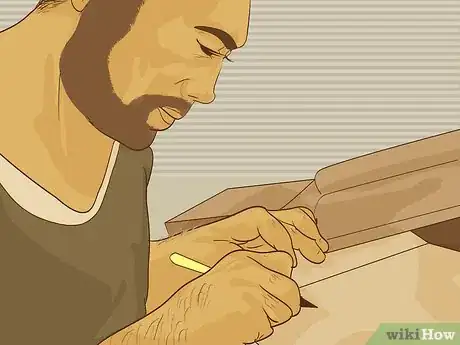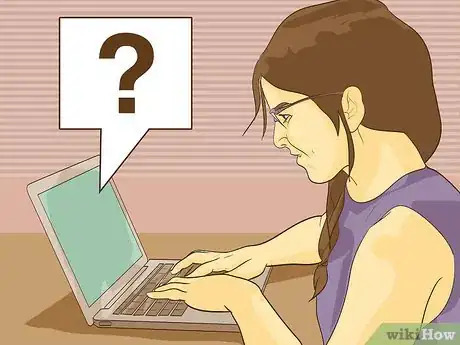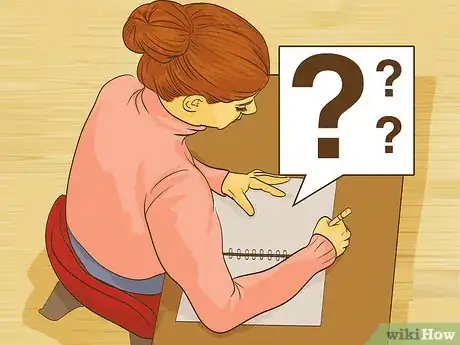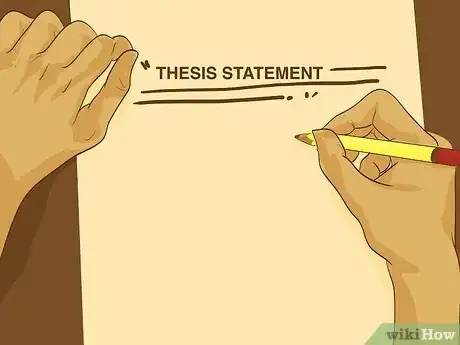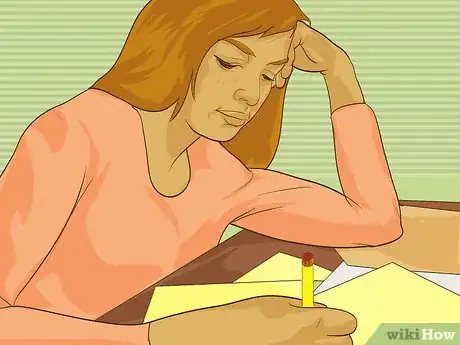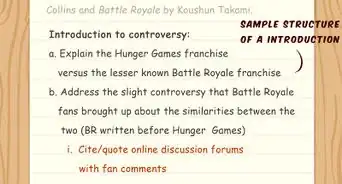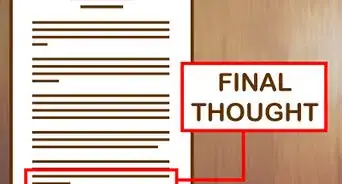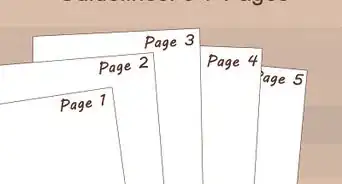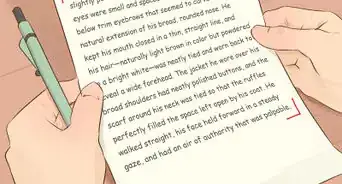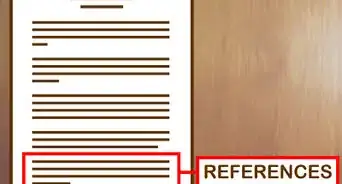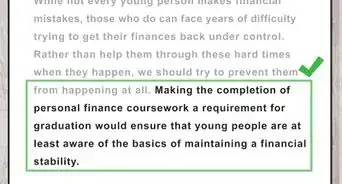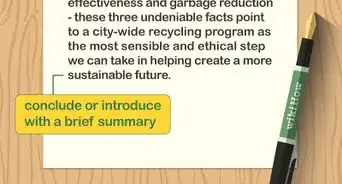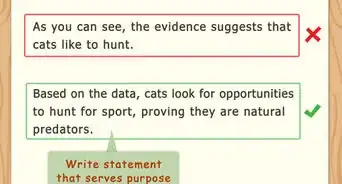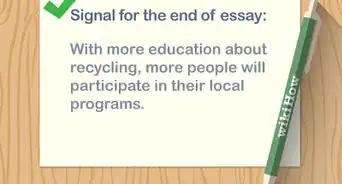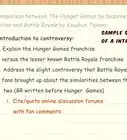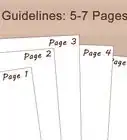This article was co-authored by Tristen Bonacci. Tristen Bonacci is a Licensed English Teacher with more than 20 years of experience. Tristen has taught in both the United States and overseas. She specializes in teaching in a secondary education environment and sharing wisdom with others, no matter the environment. Tristen holds a BA in English Literature from The University of Colorado and an MEd from The University of Phoenix.
There are 9 references cited in this article, which can be found at the bottom of the page.
This article has been viewed 73,171 times.
When writing an introduction paragraph, you should always include a hook to capture the reader's attention, supporting information about the topic at hand, and a thesis statement. That said, there are still multiple introduction paragraphs you can use for your paper. This article will describe a few common ones, as well as some that you might not have seen.
Steps
Anecdotal Introduction
-
1Tell a small story. The story can be humorous, serious, or shocking, but regardless of its nature, it should directly address or relate to the topic of your paper.[1]
- Anecdotes can be true or fictional. They can also be personal or about someone else.
- The story should be short enough to tell in a few sentences.
-
2Bridge into the topic. After you tell the story, briefly explain why you told it and why the reader should care.[2]
- You may end up introducing the main ideas of your essay during this portion of your introduction.
Advertisement -
3State your thesis. In a single sentence, come up with a thesis that focuses the topic and tells the reader what to expect about the paper to come.[3]
- A thesis statement is a single sentence that defines a specific point or idea about a broader topic that your entire paper is built around.
- The connection between your thesis statement and the anecdote you used should be obvious to the reader. If the thesis statement does not fit into the introduction as it currently stands, you may need to use more supporting evidence to lead into the thesis or change the anecdote you use.
Historical Review
-
1Determine if a historical review could be helpful. There are many papers for which no historical context is needed, but if historical context can help clarify things to the reader, a historical review introduction can be very helpful.[4]
- These introductions are usually used for papers written about a historical time period or topic, a historical critique of a piece of literature, or a long-standing problem that people throughout the ages have tried to address.
-
2Provide factual and historical context about the the topic. Outline or review a few key historical facts that offer the reader any essential information they might need in order to understand the topic of the paper.
- These pieces of information should not only provide context about the topic, but should also indirectly present the general topic itself. In doing this, you will demonstrate the the reader how your topic fits into the historical account you present in your introduction.
-
3Narrow your thoughts down to a thesis statement. The information provided thus far will be fairly general, so you need to focus the end of your paragraph on a single thesis statement that you will use to define the rest of your paper.
- A thesis statement is a single sentence that defines a specific point or idea about a broader topic that your entire paper is built around.
- With this type of introduction, your thesis statement should cause the reader to view the historical facts you just presented in a specific light or through a specific lens. In effect, your thesis statement should tell the reader why the facts you presented before it are important to keep in mind.
Literary Summary
-
1Briefly summarize the literary work you are writing about. Introduce the key bibliographic facts of the literary work and summarize the main plot or purpose of the work.[5]
- In the case of a story, you do not need to focus on specific details or give away the ending. You simply need to introduce the basic, overall theme of the story and provide information about the conflict the main character faces.
-
2Draw out a general theme from the work. Most literary works have multiple themes that can be addressed, but for the same of your paper, you will need to focus on one theme that relates directly to your thesis.[6]
- Connect your summary to the theme in a naturally, sensible manner. For instance, if writing an essay about a coming-of-age story, you should introduce the coming-of-age theme with something like, “The broken friendships and family drama Jimmy has to go through serve as his passage into adulthood.”
-
3Hint at the main sections of your essay. Lead into your thesis by briefly mentioning the main ideas of your essay, which exist to support your thesis.
- In a sense, you will be narrowing down your broad topic into a more focused, specific thought by slowly presenting ideas that narrow the reader's field of vision until all that reader sees about that literary work are the ideas presented in your paper.
-
4Come out with your thesis statement. Finish the introduction with a focused, single-sentence statement about the thesis of your essay.
- A thesis statement is a single sentence that defines a specific point or idea about a broader topic that your entire paper is built around.
- With this type of introduction, you need to choose a thesis that makes sense within the context of your summary and supporting evidence. If the thesis still seems out of place, go back and rewrite your supporting evidence until the connection your thesis has to the summary of the literary work makes sense.
Thought-Provoking Question
-
1Ask the reader a question they can related to. Address the reader directly by posing a question that is relevant to the topic of the paper. The question should also be something that will catch the attention of most people, thereby painting the topic in terms that a reader can relate to.[7]
- When choosing a question, you can ask something universal, surprising, or rhetorical.
-
2Consider backing up your initial question with two others. This is only optional, but if you want to continue narrowing down your topic, you can also provide two questions that “back up” your initial question and further clarify the issue at hand.[8]
- The additional questions you ask should gradually narrow the topic down into something smaller and more specific.
- For example, start with the question, “Why does the grass always seem greener on the other side?” After that, you can ask, “What is it about the human mind that perceives what one does not have as something more desirable than what one does have?” Your final question could then be, “Is this state of being a societal, psychological, or spiritual problem?”
-
3Hint at any answer and discuss how your essay will address the answer. You do not need to state the answer in clear terms, but you should use the main points of your paper to guide the reader in a specific direction.[9]
- Doing this also clues the reader into the approach you intend to take on the question or questions at hand.
-
4State your thesis in a single sentence. Your thesis statement will be the closest you get to providing a direct answer to your initial question. It should state what, specifically, you plan to write about.
- A thesis statement is a single sentence that defines a specific point or idea about a broader topic that your entire paper is built around.
- You do not need to give the reader a clear, definite answer to the question you ask, but if you narrowed your topic down using the three-question method, you should consider using terms or ideas from the final question in your thesis.
Words of Wisdom
-
1Offer a relevant quotation. The quotation can be famous, insightful, or unexpected, but regardless of the content or type you choose, the quotation must have direct relevance to your topic.[10]
- The quotation can be a famous saying, words from someone famous, a snippet from song lyrics, or a short poem.
- Do not insert a hanging quote. A “hanging quote” refers to a quotation that has no introduction or no explanation after it. In other words, the sentence with your quotation in it must contain other content aside from the quotation itself.
-
2Provide context for the quotation while bridging into the topic. Context can who spoke or wrote the words originally, what the words are referring to, the time period the quotation came from, or how the quotation addresses your topic.
- Note that unless the quotation is anonymous, you must always state who is responsible for it.
- This context will also introduce the topic of your paper and lead into supporting details that can introduce your thesis.
-
3State your thesis. Come out with a single statement that defines, in clear terms, what your paper is about.
- A thesis statement is a single sentence that defines a specific point or idea about a broader topic that your entire paper is built around.
- The thesis statement for this type of introduction will need to make sense in regards to the quotation you used. You should not use a general quotation that touches on the overall, broad topic but has nothing to do with the specifics of your thesis.
Corrective Introduction
-
1Mention something that people mistakenly believe. Occasionally, an essay addresses a topic that a paper's readership might often misunderstand or have inaccurate beliefs about. If this is the case, you can directly call out this mistaken belief in the first line of your introduction paragraph.
- When you state this mistaken belief, make sure to clarify that this belief is inaccurate.
-
2State your correction. As soon as you state what the wrong belief is, you need to follow your statement with a sentence about the corrected version or truth of the situation.
- This sentence should introduce the general topic of the paper and open the path for your thesis statement.
-
3Elaborate slightly on the truth. Provide supporting evidence or facts about your correction to further cement the truth of it in the reader's mind.
- These pieces of supporting evidence usually correspond to the main ideas you will cover in the body paragraphs of your essay.
-
4Wrap things up with a relevant thesis statement. With the general topic introduced and supporting evidence provided, you can now make a definitive thesis statement about what you will cover in your essay.
- A thesis statement is a single sentence that defines a specific point or idea about a broader topic that your entire paper is built around.
- In some ways, your thesis statement will be like a direct foil or mirror image of the misconception you are addressing. The two will be directly connected yet directly opposite one another.
Declarative Introduction
-
1Write about the general topic immediately. With this type of introduction, you begin writing about your topic from the start without any lead in or hook.
- Introduce the topic in your first sentence.
- In the sentences that follow, elaborate on the topic by introducing facts or ideas that you intend to use as main points or major sections of your essay.
-
2Never state what your essay is about in direct terms. Even though this type of introduction requires you to introduce your topic right away, you should never issue a direct statement that states the topic in precise, specific terms.
- Phrases to avoid include:
- “In this essay, I will write about...”
- “This essay will discuss...”
- “In this essay, you will learn about...”
- Stating your topic in such precise terms creates a stiff, unnatural flow of words. You should strive to make the tone of your introduction professional yet conversational so that the reader can fall into your writing more naturally.
- Phrases to avoid include:
-
3State your thesis. After you introduce the overall topic, you should conclude the introduction paragraph with a single statement that acts as your thesis.
- A thesis statement is a single sentence that defines a specific point or idea about a broader topic that your entire paper is built around.
- The portion of your introduction leading to the thesis will often narrow down the topic gradually until you can naturally introduce your specific thesis.
-
4Use this introduction with caution. While this type of introduction can be effective, it can often be boring and is not generally recommended.
- The only time that this type of introduction tends to work is when the writer is writing for an audience already interested in the topic. If the topic is strictly factual and not open to much subjective interpretation, then a declarative introduction might be proper.
- When you write an essay, you should fact-check everything and know who your audience is.
- It should not be boring. It should be relatable to people.
- The introduction should appeal to the audience.
Community Q&A
-
QuestionHow many sentences does one paragraph have?
 Community AnswerIf you would like to make a simple one, write three to four sentences. If you want to go into more detail, write five or six.
Community AnswerIf you would like to make a simple one, write three to four sentences. If you want to go into more detail, write five or six. -
QuestionHow do you start an introduction paragraph?
 Community AnswerThis article contains several suggestions on how to begin your introduction depending on what kind of paper you're writing. You want to start with a "hook", something interesting or thought-provoking that will capture your reader's interest.
Community AnswerThis article contains several suggestions on how to begin your introduction depending on what kind of paper you're writing. You want to start with a "hook", something interesting or thought-provoking that will capture your reader's interest.
References
- ↑ http://writingcenter.unc.edu/handouts/introductions/
- ↑ https://www.esu.edu/writing-studio/guides/hook.cfm
- ↑ https://www.butte.edu/departments/cas/tipsheets/style_purpose_strategy/intro_conclusions.html
- ↑ https://guides.lib.ua.edu/c.php?g=39963&p=253698
- ↑ https://www.bucks.edu/media/bcccmedialibrary/pdf/HOWTOWRITEALITERARYANALYSISESSAY_10.15.07_001.pdf
- ↑ https://germanna.edu/sites/default/files/2022-03/Literary%20Analysis.pdf
- ↑ https://writingcenter.unc.edu/tips-and-tools/introductions/
- ↑ https://libguides.usc.edu/writingguide/introduction
- ↑ https://libguides.usc.edu/writingguide/introduction
About This Article
To write an introduction paragraph, start with an attention-grabbing “hook,” like a thought-provoking question, a relevant quotation, or a brief anecdote that relates to your topic. Once you’ve gotten the reader’s attention, use the next couple sentences to explain how the “hook” relates to the broader themes of your paper, and why the reader should care. Then, finish your intro paragraph with a thesis statement that relates directly to your first sentence, and that explains what the central argument of your paper should be. To learn some ways to tailor your introduction paragraph to the specific type of paper you’re writing, keep reading!

